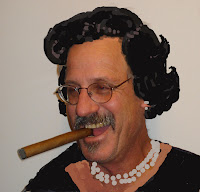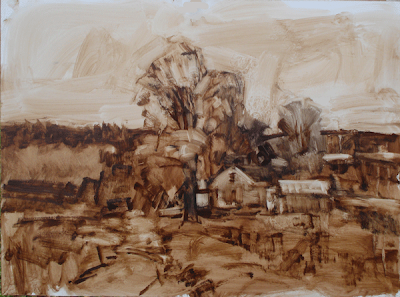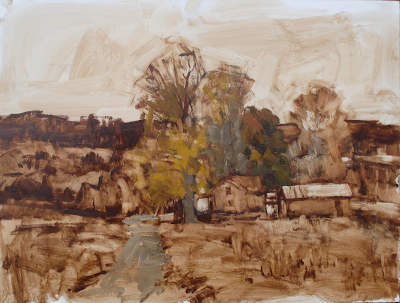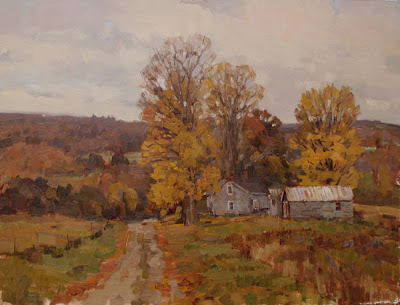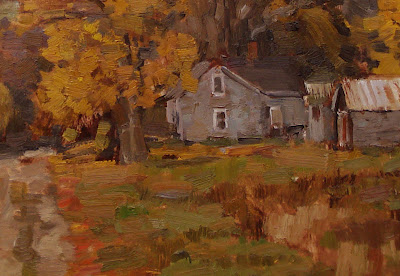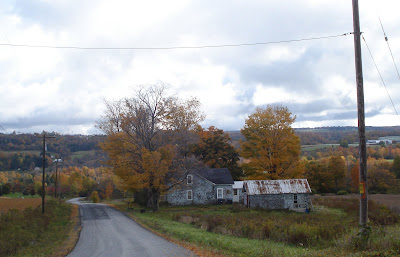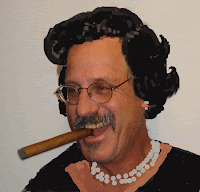
Ask Stape may be a popular idea as my in box is full of questions. I will answer a few tonight . If you sent me a question that I didn't ,I may to get to it soon. I will probably choose to answer the questions that will be most instructive to my readers.
Dear Stape, I am a first year atelier student working very diligently and spending long hours at the easel learning how to observe and draw what I see accurately. This is all well and good for cast drawing as the cast does not move, but what happens when I begin to draw a live model with only 2-3 hours paid for? How will my brain ever switch over to such a fast-paced situation and do you have any tips for what to stay focused on during such a short session to get the most out of it? What is the purpose for the short and long pose, what is a gesture drawing all about, and what should I be looking to practice and take away from these fleeting opportunities? Thanks for inviting us to ask questions and thank you for sharing your insight! - A Downeast friendDear Downeast;
Since you say you are in an atelier I should point out to you that you may never again have as much opportunity to draw the figure in long poses again. Most life drawing groups work short poses. I suggest you do as much of the long pose drawing as you can , do anatomical overlays on them with tracing paper and do memory drawings of them in the evening.
I have drawn a lot of figures but I have only used it as a training system for the drawing in the landscape. There are many artists out there who are qualified to speak with far more authority on figure drawing than I am. If I were designing an atelier curriculum though, I would include more short poses than is usual. I think drawing both short and long poses is essential, and ateliers today could benefit from doing more short poses mixed in with the longer ones. I think the ideal short pose is about twenty minutes. In figure groups in Rockport that was a common length and I found I was able to get most of what I wanted in that time.
The one minute gesture drawings might have some value, but I never had much patience with them, after my atelier days I always worked in an Aquabee sketchbook with a pencil. I had copied a lot of Ingres drawings and I always liked that look in a drawing and I feel like it captures a lot of information in a way that can be moved to a canvas logically. I put them all on one page. All of the talk of loosening up seemed hollow to me and the only good reason I could see for gesture drawing was to practice getting the "main descriptive" line of a figure.
I think that the visual approach to drawing works far less well in short poses. An approach involving building the forms of the figure through volume and form is going to be key in handling short poses. Andrew Loomis's book "Figure drawing for all its worth" is a great text but it is out of print and now expensive. It used to be available online but when I checked tonight it seemed to have been removed. Another classic text that is easily had is Bridgemans constructive anatomy, it is very inexpensive and I posted a link at the bottom of the page.
People who design landscapes well have done LOTS of them. There are some academic painters who do only half a dozen paintings a year. While this may teach them close rendering skills, a good thing to know, they don't compose enough pictures to do that well. I suspect the same may be true for figure drawing and that the ability to design graceful and artistic figures may be best developed by doing lots of them.
I also think it is good to invent figures out of your head. The best way to do that is to build them out of their anatomical units, that is the skull, ribcage , pelvis etc. Doing little imagined figures about six inches high is good training. You really have to know what happens in the figure from a construction standpoint to work short poses as their isn't the time to observe it all. you have to just know it and put it down based on experience.
Dear Stape,
Some fellow outdoor painters use a traditional medium (4 or 5 parts turps to 1 part stand oil) during their outdoor phase of painting. A small amount of this is used to mix into the white (Flake White Replacement) to eliminate the stiffness. So my question is a two-pronged one: (1) Do you prefer Galkyd to the standard medium when painting outdoors? and (2) What type of white do you prefer for both outdoor as well as indoor work?
signed Flake Replacer
Dear Flake;
I am going to reprint part of a post I wrote a while ago as it answers part of your question. Then I will add the answer to the white question. I use both Galkyd and Liquin at various times and I go back and forth on which I prefer.
The best medium is no medium. If you are happy making your paintings from paint directly out of the tube or having just a thimbleful of stand oil on your palette that is ideal. However if you are using lots of turpentine to thin your paint, that's not good at all. You need to use a medium.
Mediums are used to make the paint flow, control drying and surface gloss and sometimes to level brushstrokes. Here are the three mediums I commonly use.
The first two are alkyd mediums. Alkyd is a paint additive that promotes quick drying and makes for a tough paint film. I use Galkyd most of the time, I thin it by 1/3 with mineral spirits. It seems too thick and dries too fast as it comes out of the bottle. Galkyd is a Gamblin product and I order it from Jerrys' Artarama or ASW. The good thing about Galkyd is that it has a shine, like a varnish medium. The bad thing about Galkyd is that it will dry up in the bottle, so buy a big bottle and decant it into two smaller bottles and fill the one you are storing all the way to the top of the neck including as little air as you can.
Liquin made by Winsor & Newton is the other well known Alkyd medium. It handles well right out of the bottle but you can thin it to make it last longer. It is a thixotropic gel, that is, it is a gel till you push it with your brush, then it liquefies, when you take your brush away it gels again. Liquin has a somewhat matt finish, so it needs to be varnished to look as good later as when you painted it, and some people find it irritates their nasal membranes.
The most common traditional medium is usually referred to as VTO. It is a mixture of equal parts damar varnish and stand oil (sometimes linseed oil) and 3 to 7 parts TURPENTINE. I stress turpentine because mineral spirits is not a good thinner for damar varnish, I f you use damar in your process, your thinner must be turpentine. Every artist who uses this medium seems to tweak it to their own liking. If you use too much oil it can give you a surface that is sticky like flypaper.
I have used turpentine from the hardware store for years, however finding quality turpentine has become difficult. Much of it no longer smells sweetly of pine, but has a dreadful odor. It still says gum turpentine on the outside but I don't know if it really is. There are still some brands that are right. I take it to the counter and say something like "does this turpentine smell like death?" They will usually let me open the can, (including its little inner metal hymen) and smell it, if it doesn't smell like pine I let them smell it and refuse to buy it. If the clerk is a totally uninformed and unconcerned high school kid I can't pull this, so I try to deal with the manager or the old guy who runs the paint department.
There are times when you want your paint to stay open for a long time (dry slowly) poppy oil works nicely for that.
Most of the time I use deodorized mineral spirits from the hardware store. Gamblin makes a nice one called Gamsol. Double rectified, English or artists grade turps can be had from online suppliers and is a really fine product. As oil paint is phased out in house painting we may have to buy this when we use turpentine. It is of course much more expensive.
I guess a word on permanence is required here. I have known plenty of artists, who grind their own paint and use only copal tears cut with turpentine made by Benedictine monks in their underwear. These artists make paintings which will last forever but should never been made in the first place. Its like some guys I knew in the 70s who had these incredibly expensive stereos , but only had six albums, two of which were by Kansas. They were so hung up on the technology that they forgot it was about the music. I had a very ordinary stereo but I had a LOT of music. The point I am making here is that, it is about the pictures more than the process. You can make yourself really crazy over materials, and plenty of folks do. My guess is that alkyd paintings will outlast just about anything else anyway.
My favorite white is Lefranc and Bougerois Titanium and it is even moderately priced. It is available from Jerrys artarama or some of the other maiol order firms. It is slippery and I like that . I wrote a post comparing whites and
here is a link to that.
 I know that everybodies monitor is calibrated differently but here are the various mixtures I have been describing. They all contain enough white to open up the note so you can tell what it looks like. Above is ultramarine and cadmium yellow. Every different manufacturers cadmium yellow is a different shade too, so there is another variable. Theses are all RGH colors in these examples. You will need to make your own samples if you want to study this. Below is ultramarine plus yellow ocher.
I know that everybodies monitor is calibrated differently but here are the various mixtures I have been describing. They all contain enough white to open up the note so you can tell what it looks like. Above is ultramarine and cadmium yellow. Every different manufacturers cadmium yellow is a different shade too, so there is another variable. Theses are all RGH colors in these examples. You will need to make your own samples if you want to study this. Below is ultramarine plus yellow ocher. Below is pthalo blue plus cad yellow.
Below is pthalo blue plus cad yellow. And pthalo plus ocher.
And pthalo plus ocher. Then black plus cad. yellow.
Then black plus cad. yellow. And then black plus ochre.
And then black plus ochre. Here is cobalt blue plus cad. yellow.
Here is cobalt blue plus cad. yellow. and cobalt plus yellow ochre.
and cobalt plus yellow ochre. And lastly I mixed a bright pink into a pthalo green.
And lastly I mixed a bright pink into a pthalo green. I make and keep a tube of pink for subduing greens. You could use flesh color or cook up your own. Mine is very bright, but it is the opposite of a strong green as one makes out of pthalo. Williamsburg makes a color called Persian Rose that works very nicely. I use this and all my other reds to further modify the greens I have shown you above. By doing that I can get LOTS of different combination's. Notice the pink to green example gives a warm neutral in the middle.
I make and keep a tube of pink for subduing greens. You could use flesh color or cook up your own. Mine is very bright, but it is the opposite of a strong green as one makes out of pthalo. Williamsburg makes a color called Persian Rose that works very nicely. I use this and all my other reds to further modify the greens I have shown you above. By doing that I can get LOTS of different combination's. Notice the pink to green example gives a warm neutral in the middle.




